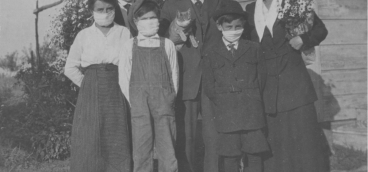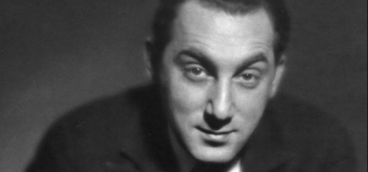Asymptomatic Spread

We’re going over examples that demonstrate how difficult it is to “follow the science,” especially in the early months and years of something as novel and complex as COVID. Let’s take a look at the phenomenon of:
Asymptomatic spread
Previously in this series: Panic is a Virus Part V: Bad COVID Science
When we say we have the flu, what we actually mean is that we are experiencing flu-like symptoms. Nobody gets tested to see if they have the flu virus. If it’s flu season, and if lots of other people have flu symptoms, and if we have flu symptoms, then we have the flu. We feel rotten, stay home from work, get lots of rest, drink plenty of fluids, take Tylenol.
By the way, we all know none of that is going to make us better, but we do it anyway because that’s what the doctors tell us to do. As a very smart person once said, the role of doctors is to entertain their patients while waiting for nature to cure them.
Because all the top virologists at WHO and CDC had spent their careers studying the flu virus, they immediately leaped to the conclusion that COVID was spread in the same manner as the flu – that is, by people with COVID symptoms. But why assume asymptomatic spread of COVID didn’t happen unless you were buried so deeply in your flu silo you couldn’t see out of it?
After all, there are lots of viruses around and many are spread by people with no symptoms at all. Consider HIV. People suffering from AIDS can be asymptomatic for years – even a decade – and meanwhile they are unknowingly infecting their sex partners who, possibly asymptomatic themselves, infect their sex partners and so on. It was HIV’s asymptomatic spread that was partly responsible for the terrible scourge of AIDS.
Almost immediately after the pandemic began, scientists outside WHO and CDC began to assert that COVID could be spread asymptomatically and that asymptomatic spread might even be the main transmission method. Among these people was Dr. Deborah Birx, who served on President Trump’s Coronavirus Task Force. Dr. Birx wasn’t smarter than other virologists, but she wasn’t distracted by the flu theory because she had spent most of her professional life working on AIDS.
But no matter how much evidence of asymptomatic transmission came in, WHO and CDC kept their heads firmly buried in their flu siloes. At WHO, the point person on COVID, Dr. Maria Van Kerkhove, stated categorically that asymptomatic spread of COVID was “very rare.” The CDC promptly agreed, arguing that asymptomatic spread accounted for only 5% of cases.
But this was bad science. We now know that asymptomatic transmission wasn’t “very rare” and it didn’t represent “5% of cases” – people without symptoms transmit more than 50% of all COVID cases. This was clearly shown in a study published in the Journal of the American Medical Association (JAMA) in January 2021, which concluded that “transmission from asymptomatic individuals was estimated to account for more than half of all transmission.”
Once it was understood that asymptomatic people could spread the virus – which we knew very early in the pandemic – it was only common sense to conclude that asymptomatic spread was likely the main transmission mechanism. After all, most people who are symptomatic get tested, find out they’re positive, and isolate. But people who are asymptomatic-but-infected go about their usual routine, infecting people all along the way.
It’s also important to understand that the term “asymptomatic” includes a great many people:
(1) Some asymptomatic people are presymptomatic, that is, they will develop COVID symptoms but haven’t yet experienced them even though they have been infectious for some time.
(2) Some asymptomatic people will never experience symptoms even though they are infectious.
(3) Some asymptomatic people are really symptomatic, but the symptoms are so mild they don’t recognize that they have COVID and are infectious.
It seems highly likely that these three kinds of asymptomatic people vastly outnumber people who are symptomatic-and-infectious.
By refusing to acknowledge the profound role of asymptomatic spread of COVID, WHO and CDC allowed the disease to spread much faster than it would otherwise have done, resulting in tens of thousands of unnecessary deaths.
We can begin to get a handle on the importance of asymptomatic spread by looking at rare instances of “universal testing,” that is, places where everyone was tested regularly whether they had symptoms or not. Consider college campuses.
In the fall of 2020 most colleges and universities remained closed, with students attending classes, if at all, remotely. Some colleges tried to open, but as soon as COVID cases began to rise they closed and sent everyone home.
But a few institutions bucked that trend. They opened for in-person classes but – critically – tested every student, staff and faculty member regularly. The University of South Carolina tested half of its (35,000-strong) student body every week, and the other half the next week, and other thoughtful institutions did the same.
The results were telling. Across the society generally, asymptomatic spread was, as noted above, estimated at about 50%. But by testing 100% of the student population, it was discovered that asymptomatic spread approached 95% of total spread. By identifying and isolating sick students who had no (or few) symptoms, these universities halted the pandemic within their own borders, allowing them to remain open.
Clearly, viewing asymptomatic spread as a trivial issue was bad science, but we all believed it and conducted ourselves accordingly. If we didn’t have symptoms we didn’t get tested and many of us unknowingly infected others. What WHO and CDC should have recommended is that everyone get tested regularly whether they had symptoms or not.
WHO and CDC didn’t recommend universal testing because they refused to believe the evidence before their eyes, and we all paid a very high price for it. But there was another reason why the CDC didn’t recommend universal testing in the US. See “Test-and-Trace,” next week.
Next up: Panic Is a Virus, Part 7








